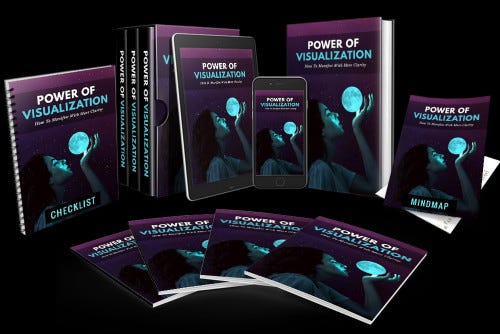
Visualization, often referred to as mental imagery or creative visualization, is a powerful tool that can help individuals manifest their goals and aspirations. It involves creating vivid mental images of desired outcomes, experiences, or achievements. While it may seem like a simple practice, the power of visualization goes far beyond wishful thinking. In this article, we will explore the science behind visualization, its practical applications, and how you can harness its potential to transform your life.
The Mind-Body Connection
Visualization operates on the principle that the mind and body are interconnected. When you vividly imagine a scenario, your brain activates the same neural pathways as it would if you were actually experiencing that scenario. For instance, when you visualize yourself running a marathon, the motor cortex of your brain fires up in a manner similar to when you physically run.
Neuroplasticity
The brain’s ability to rewire itself is known as neuroplasticity. Visualization can be a catalyst for this phenomenon. When you repeatedly visualize a specific goal, your brain adapts by strengthening the neural connections associated with that goal. This can enhance your ability to perform related tasks in reality.
Stress Reduction
Visualization has been linked to stress reduction and relaxation. When you immerse yourself in a calming mental image, your body responds by lowering stress hormones like cortisol. This, in turn, can improve your overall well-being and mental clarity.
Practical Applications of Visualization
Athletic Performance
Athletes have long used visualization to enhance their performance. By mentally rehearsing their actions, they improve their muscle memory and coordination. Visualizing success also boosts confidence, which is crucial in competitive sports.
Goal Achievement
Visualizing your goals can make them feel more attainable. When you repeatedly see yourself reaching a specific goal, your subconscious mind works towards aligning your actions with that mental image. This can be a powerful motivator for goal setting and accomplishment.
Public Speaking
Overcoming the fear of public speaking is a common challenge. Visualization can help by allowing you to mentally rehearse your speech, imagine a receptive audience, and build confidence in your ability to convey your message effectively.
Visualization techniques are frequently employed in stress management and relaxation exercises. Creating a mental sanctuary or visualizing stress dissipating can be effective ways to reduce anxiety and promote inner peace.
Creative Problem Solving
Visualization can stimulate creativity and innovation. When faced with a problem, you can use visualization to explore different scenarios and potential solutions. This mental exploration can lead to novel insights and breakthroughs.
Harnessing the Power of Visualization
Set Clear Goals
To harness the power of visualization, start by setting clear and specific goals. Whether it’s improving your professional skills, achieving a fitness milestone, or enhancing your relationships, having a well-defined objective is essential.
Create Vivid Mental Images
When you visualize, make your mental imagery as vivid and detailed as possible. Engage all your senses. Imagine not only what you see but also what you hear, smell, taste, and touch in your mental scenario.
Consistency Is Key
Consistency is vital for the effectiveness of visualization. Dedicate regular time to your practice, ideally daily. The more you reinforce your mental images, the more likely they are to materialize.
Embrace Positive Emotions
As you visualize your goals, immerse yourself in the positive emotions associated with achieving them. Feel the joy, satisfaction, and confidence as if your success has already been realized.
Take Inspired Action
Visualization alone is not a substitute for action. Use the motivation and clarity gained from your mental imagery to take concrete steps towards your goals. Visualization should complement your efforts, not replace them.
Believe in Yourself
Self-belief is a cornerstone of successful visualization. Trust in your abilities and the power of your mind to manifest your desires. Doubt and skepticism can hinder the process.
Conclusion
The power of visualization lies in its ability to bridge the gap between imagination and reality. By harnessing the science behind mental imagery and applying it to various aspects of life, individuals can unlock their full potential. Whether you aspire to achieve personal, professional, or athletic goals, visualization can be a potent tool on your journey to success. So, close your eyes, dream big, and watch as your mental images pave the way for a brighter future.
